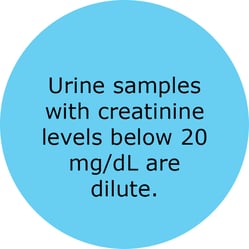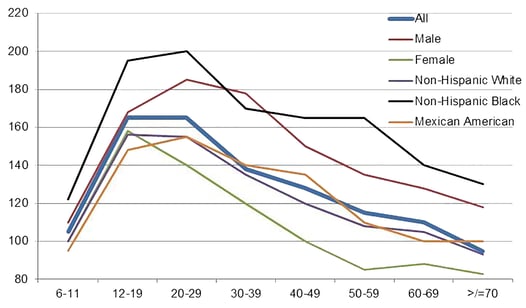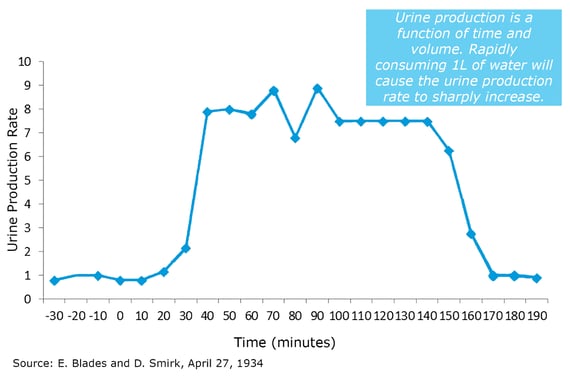Richmond, Va. - Urine specimen dilution is the most common method used to avoid detection of new drug and alcohol use. Dilution occurs when someone consumes an excessive amount of fluid (2-4 quarts) over a short period of time (90 minutes). Dilution significantly lowers the concentration of detectable drugs and alcohol in urine and also reduces urine creatinine levels. In many cases of dilution, a client is following the instructions of a product that falsely claims to cleanse the body of drugs and alcohol. The list of such products is long, though none actually eliminate drugs and alcohol, they simply advise clients to dilute and avoid drug and alcohol use prior to testing.
What is Creatinine?
Creatinine is a by-product of muscle metabolism that is produced and filtered at a relatively constant rate throughout the day and is only excreted via urination. Creatinine levels can be accurately estimated at 95% confidence using just age, gender, weight, and race.
Low creatinine levels may very rarely be caused by certain medical conditions, and clients who always produce a low creatinine level should seek medical treatment. However, low creatinine levels are not caused by controlled diabetes, exercise, high blood pressure, obesity, diet, pregnancy, or menstrual cycles. In addition, someone working in the hot sun and drinking lots of water will not significantly reduce their creatinine levels in their urine. Low creatinine levels are not caused by drinking lots of fluids to hydrate because of exercise or manual labor, as the body uses these fluids to hydrate in lieu of urination. Remember, creatinine is only excreted via urination, not sweat.

How to Produce a Dilute Urine Sample
Consuming an excessive amount of fluid (2-4 quarts) over a short period of time (90 minutes) will dilute urine. The average person naturally produces about one millimeter of urine per minute. For a normally hydrated person, dilution can increase urine production by about 8x normal levels, thereby increasing the volume of water in an individual’s bladder relative to the volume of detectable drugs. Increased urine production generally persists for 2-3 hours.

How to Avoid Dilution
Avoiding a dilute sample is easy; a client only needs to limit fluid consumption to 32 ounces for two (2) hours prior to providing a sample. A 7-11 Big Gulp or a large McDonald’s drink are 32 ounces. A Starbucks Venti drink is 24 ounces.
Interpreting Dilute Test Results
- Dilute, Positive = Positive
- Dilute, Negative = Unknown (even with Level of Detection)
Treatment & Behavior Modification Considerations
A client with a new use event that follows instructions (i.e., reports for random testing, does not dilute, does not attempt to use a device) is embracing honesty and may require a treatment plan modification.
A client with a new use event that attempts to provide a substitute or adulterated sample is dishonest. This action generally results in some form of behavior modification or sanction.
Dilution is equivalent to attempting to provide a substitute or adulterated sample.
